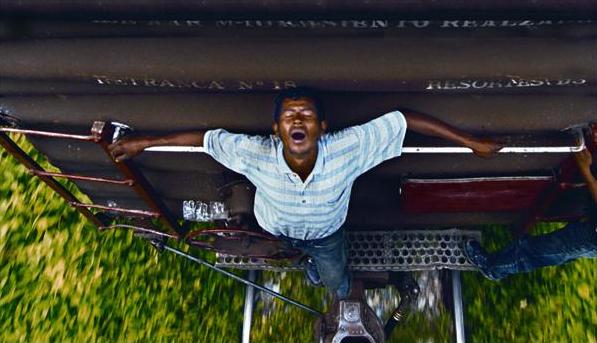
Going to the other side of the wall is one way GTU alumnus Daniel Groody describes his work with homeless people and immigrants. The metaphor stems from a real-life experience Groody had as a student at the GTU: “There was a homeless man that slept on the other side of the wall at Virginia and Le Roy streets. I was on one side — a white male, Catholic priest, Holy Cross religious, scholar, and teacher from a privileged upbringing in Connecticut and corporate America. I wanted to understand living texts, not just the written texts; I wanted to know how spirituality lived out on the streets.”
So Groody went to the other side of the wall. He sat down with homeless people, people down on their luck, drug dealers, and prostitutes to learn about their lives. He asked, “If you could preach to a church community, what would you say?”
“I want to be seen as a human being” was the answer he heard most often. This answer led Groody to see the people he talked with as authorities, and taught him, above all, that the most informative answers came “by listening to the human heart.
 |
|
“We have many physical borders, but the – Daniel G. Groody, C.S.C., Ph.D. 2000 |
Groody’s upbringing didn’t portend his attraction to “the heart, beauty, light, connection, and deep suffering” in the Latin American experience. But a 1981 stay as an exchange student with a Uruguayan family whose son was one of the ‘disappeared’ under that country’s military dictatorship moved him. Later, he traveled to Chile at the end of the Pinochet dictatorship, and during his studies at the GTU, he began working with migrants on the U.S.-Mexican border. More recently, he has worked with immigrants at the borders between Spain-Morocco, Malta-Libya, and Slovakia-Ukraine. Groody says he is interested in immigrants’ spiritual journey, the response of the Church to their physical journey, and to a theology of migration as a human journey. “How does theology help us understand who we are before God as a pilgrim people?” he asks.
“All of these ways of viewing immigration are important, with immigration now a red-hot issue in U.S. and global politics. We have many physical borders, but the most challenging borders we have to cross are those between the head and the heart. Being open to seeing the human narrative no matter what piece of land you’re on is key to humanely addressing immigration issues.”
Groody has published extensively, including A Promised Land, A Perilous Journey: Theological Perspectives on Migration and Border of Death, Valley of Life: An Immigrant Journey of Heart and Spirit. He also has produced several films, including Dying to Live: A Migrant’s Journey, seen by 5 million people, with music by Bruce Springsteen. He has worked with the U.S. Congress, the U.S. Conference of Catholic Bishops, the World Council of Churches, and the Vatican on issues of theology, globalization, and immigration. He is now beginning to address issues of human trafficking.
Whatever his current project, he says, “I am not just trying to inform mind and heart, but to transform, to move others to ask themselves,“What does it mean to be human before God?”
For more information about Dan Groody’s work, visit www.nd.edu/~dgroody.
